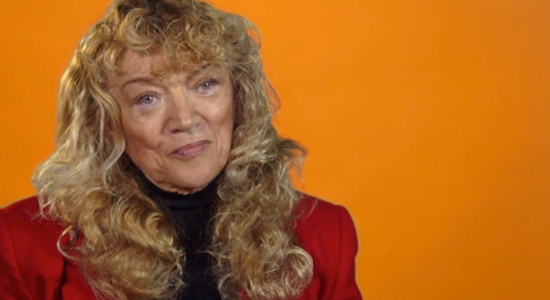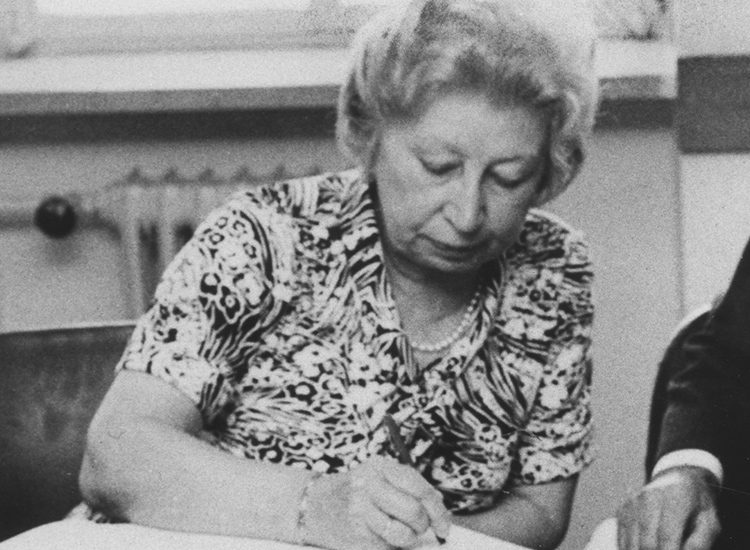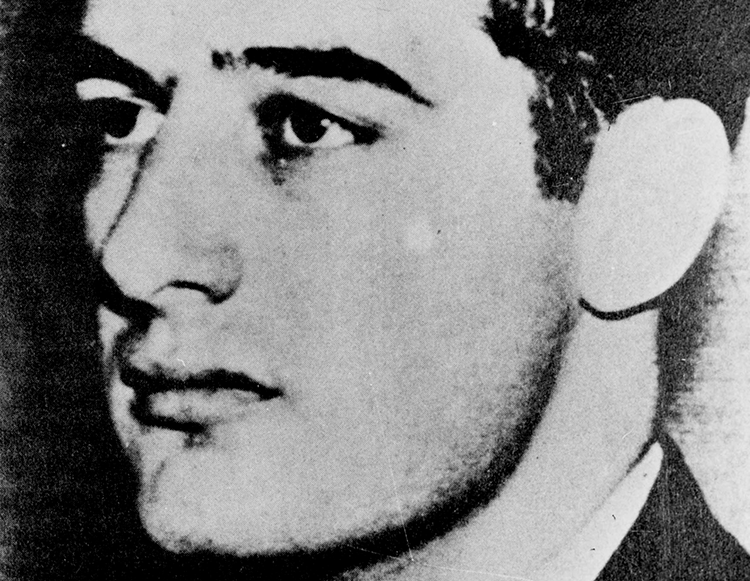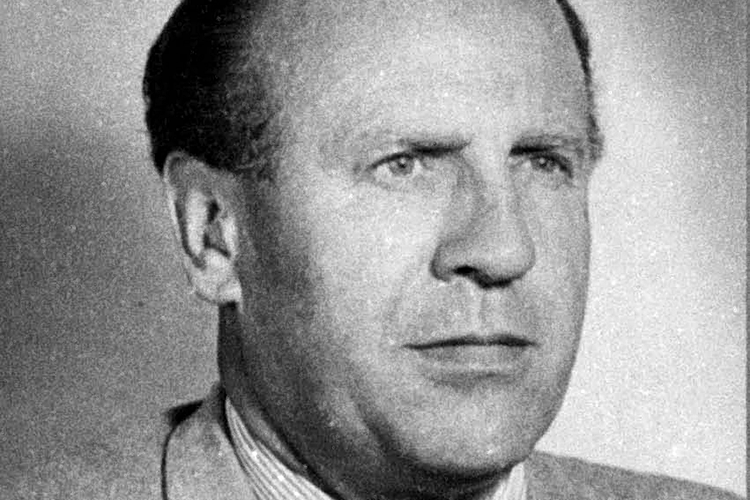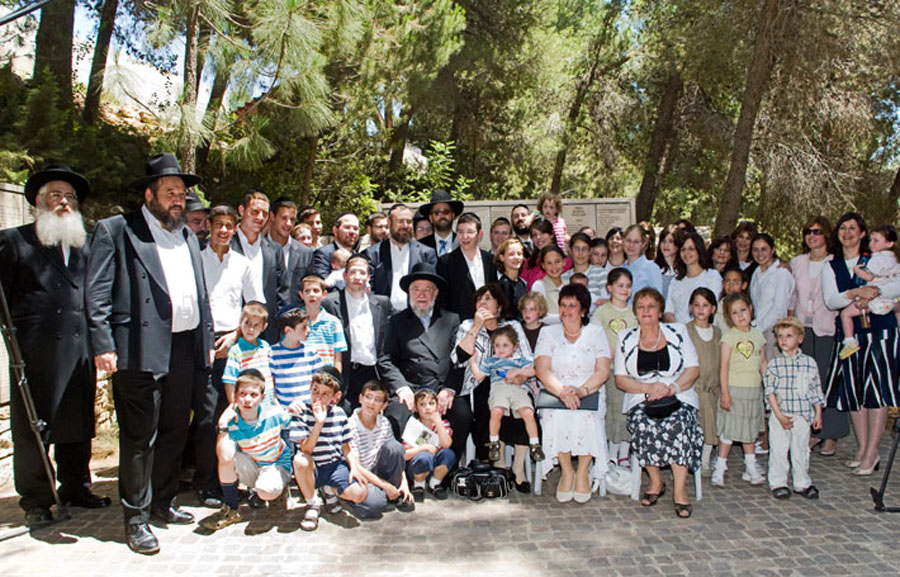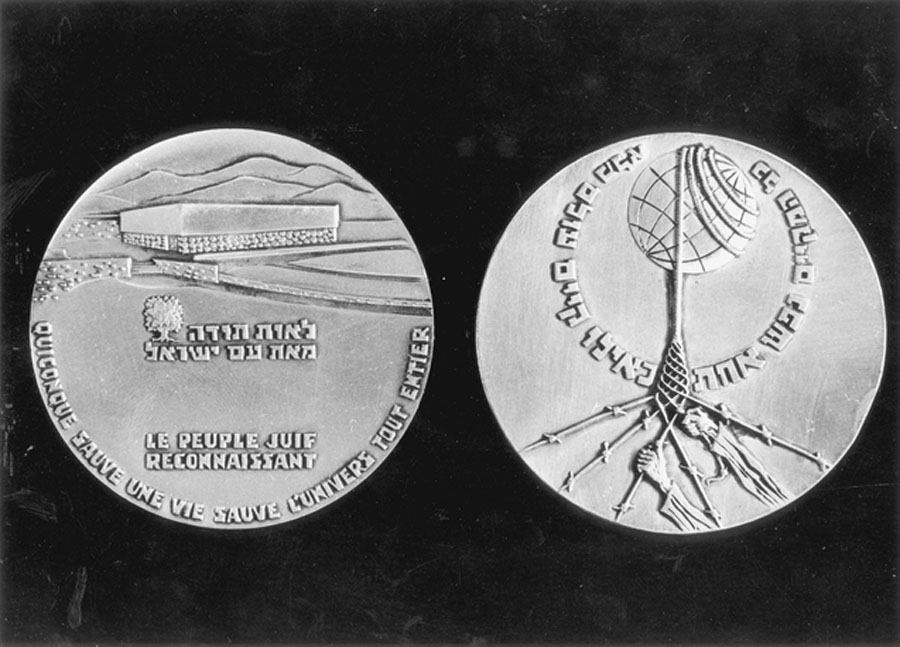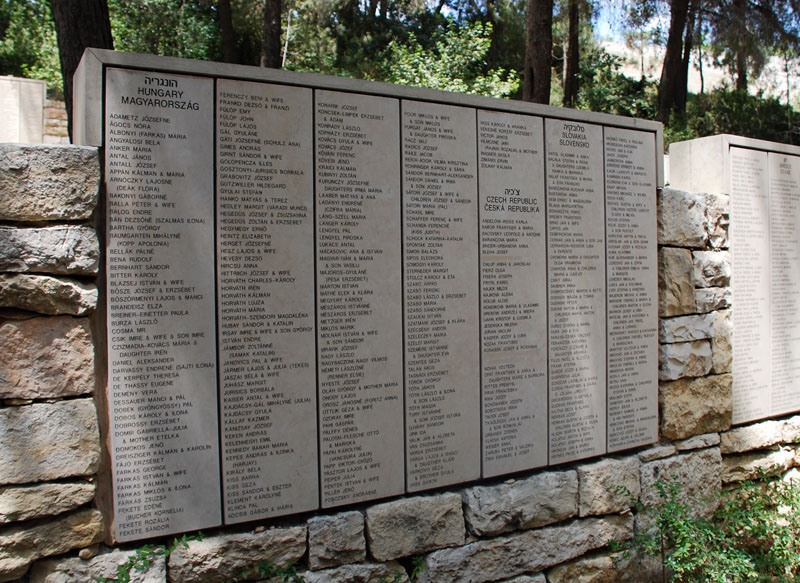Educator Tools

 Ask yourself:
Ask yourself:
- What factors motivate some people to perform heroic acts to save lives while the majority of people choose to remain inactive?
- Why is it important that the actions of rescuers are both studied and publicly honoured?
This really happened
The Nazi plan of purposeful extermination of about 1,000,000 Roma, 6,000,000 Jews, thousands of disabled children and adults and thousands of gay men and political dissenters in the years 1933 to 1945, demonstrates the evil of which so called “civilized” persons are capable. At the same time, it is important to consider that during this same period in history, an estimated 50,000 people from across many countries risked their own lives to save those who were being persecuted under Nazi rule.
Source: Sir Martin Gilbert, The Righteous: Unsung Heroes of the Holocaust. (New York: Holt Paperbacks, 2004)
Stories of Rescuers
To date, about 24,000 people have been honoured as Holocaust rescuers. In most cases, the rescuers began as bystanders and then for some reason felt compelled to help. The following stories describe three heroes of the Holocaust – Miep Gies, Raoul Wallenberg and Oskar Schindler. Each acted in a different way to save persecuted Jews.
Generally, rescuers’ actions fall into one of the following categories:
- Hiding victims so they could not be found and sent to concentrations camps
- Providing false identities so victims could flee to a safe country
- Smuggling victims out of the country
 Artifacts
Artifacts
Artifact One › Miep Gies
Although born in Austria, Miep Gies was raised as a foster child by a large and generous family in Amsterdam, Holland. When the Nazis invaded Holland in 1940, Gies was employed in a company owned by a Jewish man named Otto Frank. The Frank Family soon received deportation orders and knew they would be sent to a concentration camp, so Otto Frank asked her if she would be willing to keep his family hidden from the Nazis in the attic of their company building. The family consisted of Otto Frank, his wife, and two daughters: Margot, 16 and Anne, 13. Gies agreed.
For two years she provided the Frank Family, and another family who had joined them, with food, clothing, and books. She also provided news from the outside world and emotional comfort.
After two years of hiding there, the building was raided by the Nazis and the members of the two families were sent to a concentration camp. With the exception of Otto Frank, the entire family perished in the Holocaust.
In the attic, there remained the diary, which young Anne Frank kept during the two years of hiding. When the Franks were taken, Gies rescued the diary and when Otto Frank returned at the end of the war, she presented it to him. After the war, this diary was published as a book called The Diary of a Young Girl. Anne’s diary has been translated into over 70 languages and has since been read by millions of people.
Read about Anne Frank
Artifact Two › Raoul Wallenberg
Raoul Wallenberg was born into a wealthy Swedish banking family. Sweden remained a neutral country during the war but through his work in banking, Wallenberg became aware of the Nazi plan to exterminate millions of people. When the Nazis invaded Hungary in 1944, the Swedish legation in Hungary was given permission to issue a limited number of security passes to Jews who had a special connection with Sweden. Raoul Wallenberg was in Hungary as a Swedish diplomat working with the US War Refugee Board.
Wallenberg was committed in his efforts to save those persecuted in the Holocaust. He created special protective passes, which would allow those about to be sent to the camps to leave Hungary for a safer place. He made sure that the passes looked professional and appeared to be issued by government agencies. His goal was to ensure that those carrying the passes would not be stopped and questioned.
Wallenberg also acquired several houses in Hungary, which he declared to be Swedish government property. He used these safe houses to hide Jews while they waited for their passes. It is estimated that Wallenberg saved about 100,000 people.
Read about Raoul Wallenberg
Artifact Three › Oskar Schindler
When the war began in 1939, Oskar Schindler, the son of a wealthy German family, followed the Nazis into Poland hoping to make some money. There, as a member of the Nazi Party he managed to acquire a factory for little money. To make the largest possible profit, Schindler hired Jews who were not allowed to work elsewhere as cheap labour.
As Jews began to be herded into ghettoes in Poland, Schindler managed to protect a number of them by having them designated as “essential labour” in working toward a Nazi victory in the war. The workers in his factory were fed, clothed, and safe from being sent to the death camps.
When the Nazis began to ship trainloads of Jews from the ghettos to the camps, Shindler said, “Beyond this day, no thinking person could fail to see what would happen. I was now resolved to do everything in my power to defeat the system.“
Early on, Schindler had protected victims for his own interest but he was now determined to save their lives. He converted his factory to a bullet manufacturer and took over 1,000 Jews to work there. In this way, he saved their lives.
He is buried in Israel.
Read about Oskar Schindler
ACTION 1
Think
The Righteous Among the Nations
Almost 28,000 heroes from 51 different countries have been honoured at Yad Vashem, the national Holocaust museum in Israel. Those honoured are called Righteous Among the Nations.
Historians have estimated that the number of rescuers represent only 0.5% of 1% of the populations of Nazi occupied countries.
Why is it that some people made the transition from bystander to rescuer?
Historians have studied this question by examining the profiles of those who had already been honoured as Righteous Among the Nations. Studies reveal that in most cases the rescuers began as bystanders and only later became rescuers. Often rescuers themselves could not explain why they had made the decision to help when they clearly understood the risk to their own lives and to their families.
We know from the testimony of those who survived the Holocaust that the majority of rescuers were not motivated by a desire for financial rewards. Why, then, did they choose to risk their own lives to save others?
ACTION 2
Discuss
Testing your assumptions
Beliefs about the motivations of rescuers
A. In pairs, discuss which statements you assume to be true. Why have you made these assumptions?
| Statement | Reason |
|---|---|
| Young people are more likely to become rescuers than older people. | |
| Women are more compassionate and are more likely to become rescuers. | |
| Religious people are more likely to become rescuers. | |
| People with more education are more likely to become rescuers than people with less education. | |
| People who are rich or powerful are less likely to become rescuers than people with less wealth and power. | |
| People who are politically involved are more likely to become rescuers than those who are not involved in politics. |
Testing your assumptions
B. Working in groups, you will now have the opportunity to test your suppositions using the information in the profiles of the following rescuers:
Raoul Wallenberg
Pierre Marie-Benoit
Selahattin Ulkume
Each member of the group selects one of these names.
iSearch
Click on the link, and under the heading rescuers, find the profile of the person you have chosen to research. As you read the profile, refer to the assumptions you made earlier and determine the veracity of your assumptions.
Share your findings with the group and explain why some people changed from bystanders to rescuers. Post your sentences on chart paper and share your thoughts with the class.
C. Using the same website, read four or five more profiles of rescuers. Refer to the statements that your group posted earlier. After reading the additional profiles, discuss and change or amend your group statement if necessary. Use a different colour to make the changes to your original statement.
Unexpected findings
From the archives of profiles and from the words of rescuers, we know they came from all classes, all levels of education, all social classes, all religions, and all nationalities. Some historians argue that the rescuers acted from a political desire to act against the Nazis. Others felt the rescuers were by nature independent thinkers. Still others argue that rescuers had strong Christian faith and a moral impulse to rescue people from harm. Rescuers, of all profiles, were people who recognized that the persecuted were fellow human beings and because of this perception they felt obliged to act.
ACTION 3
Do
Besa: A Code of Honour
Muslim Albanians Who Rescued Jews During the Holocaust
“There is no trace of any discrimination against Jews in Albania, because Albania happens to be one of the rare lands in Europe today where religious prejudice and hate do not exist, even though Albanians themselves are divided into three faiths.”
– Herman Bernstein, the United States Ambassador to Albania, 1934
Before the Second World War, there were approximately 200 Jews living in Albania, a country consisting mainly of Muslims and Christians. The rescue of Jews by Albanians is notable due to its scale and because they rescued not only Albanian Jews, but all those seeking refuge from the late 1930s up until the Allies defeated the Nazis.
Thousands of Jews were smuggled into Albania by Albanians outside the borders, primarily in Kosovo. Having survived centuries of invasion, occupation, expulsion, and even genocide themselves, religious and ethnic tolerance is part of Albania’s history. The moral code of Besa teaches tolerance and compassion, linking honour to respect and equality. Albania is probably the only Nazi-occupied country that had more Jews after the Holocaust than before.
The Albanian example of empathy, tolerance, and courage should be remembered by people around the world.
Read about Besa
Watch the trailer of Besa The Promise
Additional Rescuers
Albert Göring – brother of Hermann Göring who rescued dozens of Jews
Irena Sendler – a Polish Catholic nurse who saved 2,500 Jewish children from the Warsaw ghetto
Sempo Sugihara – a Japanese diplomat in Lithuania who issued 2,140 travel visas to Jews
Think
Imagine what kinds of challenges rescuers had to confront:
- grappling with the decision to help
- limited space available for everyone
- limited resources to support everyone in hiding
- stress of risking death for your actions
- stress of keeping the secret
- discord/disagreement within your own family over the decision
- fear of being caught
There are also some exceptional ways in which rescuers are honoured. The Israeli Government can decide to declare a rescuer a citizen of Israel. Rescuers who have fallen on hard times are provided with monthly support from the government of Israel and they receive funds to pay for their medications if they become ill. Oskar Schindler became a citizen of Israel and chose to be buried there.
A King with Empathy
Danish citizens rescued 7,000 Jews in Denmark. The king of Denmark, Christian X, and the heads of the Danish churches all denounced the persecution of Danish Jews. When the German forces in Denmark began deporting Jews, Danish resistance groups intercepted the information, and warned the Jews of Denmark. Danish civilians rescued the country’s Jewish population by paying fishermen to smuggle them to Sweden in their boats. The Swedish government announced it would accept all refugees from Denmark.
ACTION 4
Do
In groups of four or five, your task is to design a meaningful way in which Canadians can honour those who take significant personal risks to save the lives of others.
- Create a name for the Rescuer Award.
- Decide how the rescuers who receive this Rescuer Award will be honoured.
- Establish 4 or 5 Criteria for receiving the Rescuer Award.
- Create a nomination form that will allow Canadians to recommend rescuers for the award. Provide some examples of Canadians who you believe would be eligible for the Rescuer Award.
- Design a concrete object that rescuers will receive to take home. This could be a certificate, a statue, a picture, a poem, or any other object you feel would be suitable recognition.
- Display your Rescuer Award in your school or in your school newsletter.
Further Reading
Jenna Blum, Those Who Save Us, 2005
Trudy, a history professor collects oral histories of WWII survivors, including that of her aged German mother. Throughout the book are interviews with German immigrants, many of whom reveal unabashed antisemitism.
Mark Klempner, The Heart Has Reasons: Holocaust Rescuers and their Stories of Courage, 2006
The ten Dutch people profiled in this book provide an in-depth look into the hearts and minds of Holocaust rescuers who saved the lives of thousands of Jewish children during the Nazi occupation of Holland.
Janusz Korczak, Ghetto Diary, 2003
Korczak, a paediatrician and well-known author, gave up a brilliant medical career to devote himself to the orphans of Warsaw.
Leon Lyson, The Boy on the Wooden Box. How the Impossible Became Impossible,2013
As one of the youngest members of Schindler’s list, Leyson offers a perspective of the righteous hero in this memoir.
Doreen Rappaport, Beyond Courage: The Untold Story of Jewish Resistance during the Holocaust, 2012
The author presents 21 true stories of defiance and heroism in Nazi-occupied Europe.
Every effort has been made to gain permission from copyright holders to reproduce borrowed material. The publishers apologize for any errors and will be pleased to rectify them in subsequent reprints and website programming
Educator Tools


